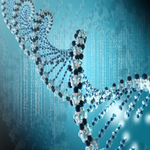Sixth Grade Science
Here is a list of the main scientific concepts students learn in sixth grade! These science concepts are organized into categories. To start, just click on any link. You can do these in any order at any pace that's right for you.
Chapters 1 & 2: Earth Science
___________________________
Chapter 1
Earth Science: Weather & Atmosphere
Chapter 1-1
Topic Intro & Explanation Watch the FIRST video explanation on this page (Weather, Atmosphere & Water Cycles 1)
Chapter 1-2
Activities & Experiments Choose at least two of the activities below.
Chapter 1-3
Activities & Experiments Choose at least three of the activities below.
Chapter 1-4
Topic Intro & Explanation Watch the SECOND video explanation on this page (Weather, Atmosphere & Water Cycles 2)
Chapter 1-5
Activities & Experiments Choose at least two of the activities below.
Chapter 1-6
Activities & Experiments Do one or both of the activities below.
___________________________
Chapter 2
Earth Science: Renewable Energy
Chapter 2-1
Topic Intro & Explanation Watch the THIRD video explanation on this page (Renewable Energy)
Chapter 2-2
Activities & Experiments Choose at least one of the activities below.
- Soaking Up Rays
- Can sun be used to heat water?
- How can the sun be used for cooking?
- Can solar energy be concentrated?
Chapter 2-3
Activities & Experiments Choose at least two of the activities below.
- Can insulation save energy?
- How can trees keep things cool?
- Can electricity be made from sunlight?
- How much energy does the sun produce?
- Can wind be used as a source of energy?
- Can a battery be used to store energy?
- Solar Cookies
Chapter 2-4
Activities & Experiments Choose at least one of the activities below.
- Can evaporation be used for cooling?
- Can expanding gases be used for cooling?
- Can salt be used for heating & cooling?
Chapters 1 & 2 Learning Evaluation
Complete the Learning Evaluation below. Learning evaluation
___________________________
 |
Earth Science In this section, students discover ideas in meteorology as students investigate the science of the Earth’s atmosphere, and how it is driven by the sun and influenced by the oceans. Students learn about convention currents, tornadoes, air pressure, and how sunlight, water, and wind can be used as sources of energy. |
Chapters 3 & 4: Physics - Energy
___________________________
Chapter 3
Thermal Energy
Chapter 3-1
Topic Intro & Explanation Watch the FIRST video explanation on this page ("Thermodynamics")
Chapter 3-2
Activities & Experiments Choose at least one of the activities below.
Chapter 3-3
Activities & Experiments Choose at least one of the activities below.
- Water stores heat energy
- Fire Water Balloon
- Steamboats
- Stirling Engine (for advanced students)
Chapter 3-4
Activities & Experiments Choose at least two of the activities below.
___________________________
Chapter 4
Physical Motion Energy
Chapter 4-1
Topic Intro & Explanation Watch the SECOND video explanation on this page ("Physics")
Chapter 4-2
Activities & Experiments Choose at least two of the activities below.
Chapter 4-3
Topic Intro & Explanation Watch the THIRD video explanation on this page ("Physics: Energy")
Chapter 4-4
Activities & Experiments Choose one of the first activities listed below, and then also watch the third video ("What's a Joule?").
Chapter 4-5
Topic Intro & Explanation Watch the FOURTH video explanation on this page ("Physics: Work & Power")
Chapter 4-6
Activities & Experiments Choose at least two of the activities below.
Chapters 3 & 4 Learning Evaluation
Complete the Learning Evaluation below. Learning evaluation
___________________________
 |
Energy Energy is the mover and shaker of the universe. Heat from the sun, sounds from your radio, riding a bike and watching a movie are all expressions of different forms of energy. We’re going to focus on simple machines (pulleys, levers, and pendulums) that make use of mechanical advantage as well as studying several methods of finding, converting, storing and using alternative energy. |
Chapters 5 & 6: Life Science
___________________________
Chapter 5
Life Science: Cells
Chapter 5-1
Topic Intro & Explanation Watch the FIRST video explanation on this page ("Cells: Part 1")
Chapter 5-2
Activities & Experiments Choose at least one of the activities below.
Chapter 5-3
Topic Intro & Explanation Watch the SECOND video explanation on this page ("Cells: Part 2")
Chapter 5-4
Activities & Experiments Choose at least one of the activities below.
Chapter 5-5
Topic Intro & Explanation Watch the THIRD video explanation on this page ("Cells: Part 3")
Chapter 5-6
Activities & Experiments Choose at least one of the activities below.
___________________________
Chapter 6
Life Science: Microscopes
Chapter 6-1
Topic Intro & Explanation Watch the FOURTH video explanation on this page ("Microscopes: Part 1")
Chapter 6-2
Activities & Experiments Choose at least one of the activities below.
Chapter 6-3
Topic Intro & Explanation Watch the FIFTH video explanation on this page ("Microscopes: Part 2")
Chapter 6-4
Activities & Experiments Complete the lab below.
Chapter 6-5
Topic Intro & Explanation Watch Oliver's FIRST video explanation on this page ("Biology with Oliver: Session #1")
Chapter 6-6
Activities & Experiments Choose at least one of the activities below.
Chapter 6-7
Topic Intro & Explanation Watch Oliver's SECOND video explanation on this page ("Biology with Oliver: Session #2")
Chapter 6-8
Activities & Experiments Choose at least one of the activities below.
Chapters 5 & 6 Learning Evaluation
Complete the Learning Evaluation below. Learning evaluation
___________________________
 |
Life Science Beginning with plant science and ending with DNA study, students will discover the science behind the barely visible parts of life and the environment, such as plant structure, plant processes, tiny insects, cell division, and genetics. They will also learn proper use and care of sophisticated equipment such as the compound microscope to further observe and record data in the living world around us. |
